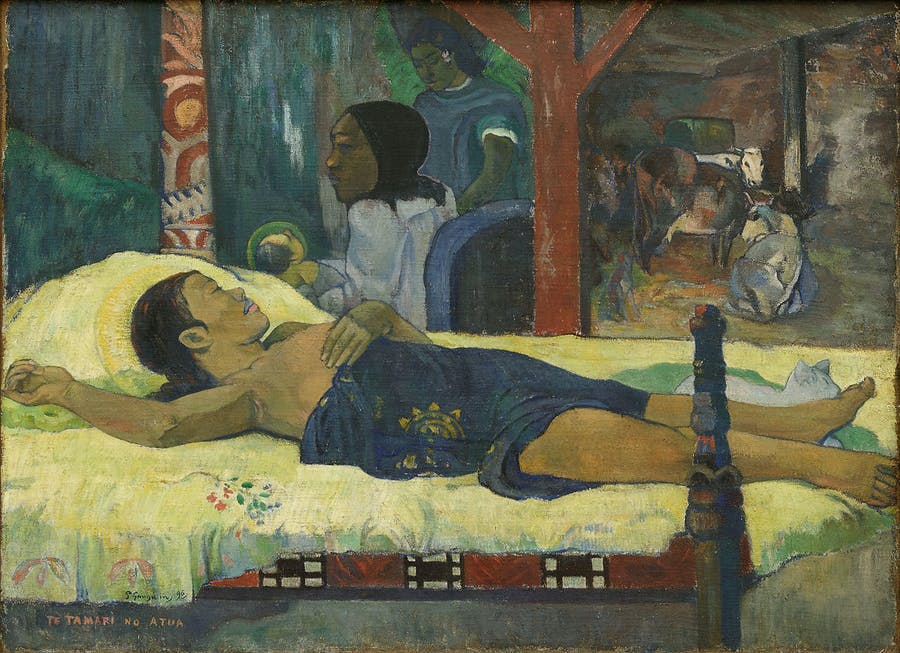The Nativity, According to Paul Gauguin
The birth of Jesus has long been a recurring motif in art, and artists generally follow a certain iconography in which each character is recognizable and has a specific role. Gauguin’s version, however, is completely out of the ordinary.
The Flemish painter Hugo van der Goes painted the birth of Jesus in the 1470s. In the central part of this Portinari triptych, we recognize the characters present in any representation of the Nativity: Mary in her blue dress, Joseph kneeling by the child and baby Jesus in the manger.
Then come various shepherds and their sheep, an ox, a donkey, and angels flying over the scene. The event takes place in a rustic stable, the only place in Bethlehem where Mary and Joseph could find refuge.

In 1896, Paul Gauguin presented his re-interpretation of the famous scene. The Impressionist painter left France for Tahiti in 1895, a place he already knew after a first stay.
In Gauguin's painting, a young Tahitian woman is lying on a bed in the foreground. She looks towards the back of the composition at a seated woman holding a baby. The heads of the child and the bedridden woman are surrounded by a halo. Near the seated woman is a figure, an angel, with green wings. Several cows are visible at the back of the room.
See also: The Getty's Gauguin Sculpture is a Fake
Although a halo surrounds the child, the elements of the Nativity are present, and the painting bears the Tahitian name of Te tamari no atua (‘Child of God’), it is more of a representation of a personal episode from the painter's life than of the birth of Christ.

On his return to Tahiti, Gauguin had settled in a modest cabin near the capital of Papeete. He lived with a young woman named Pau'ura who, at the end of 1896, gave birth to a baby girl. The child died soon after, inflicting on Gauguin the trauma illustrated in the canvas. Indeed, the seated woman holding the baby is similar to Tahitian representations of the spirit of the dead. She thus hands the lifeless child to the angel next to her.
Gauguin was not particularly pious and in no way wished to Christianize the Tahitians. On the contrary, he had found his earthly paradise in Tahiti: a colony far enough from the Western civilization that horrified him.


